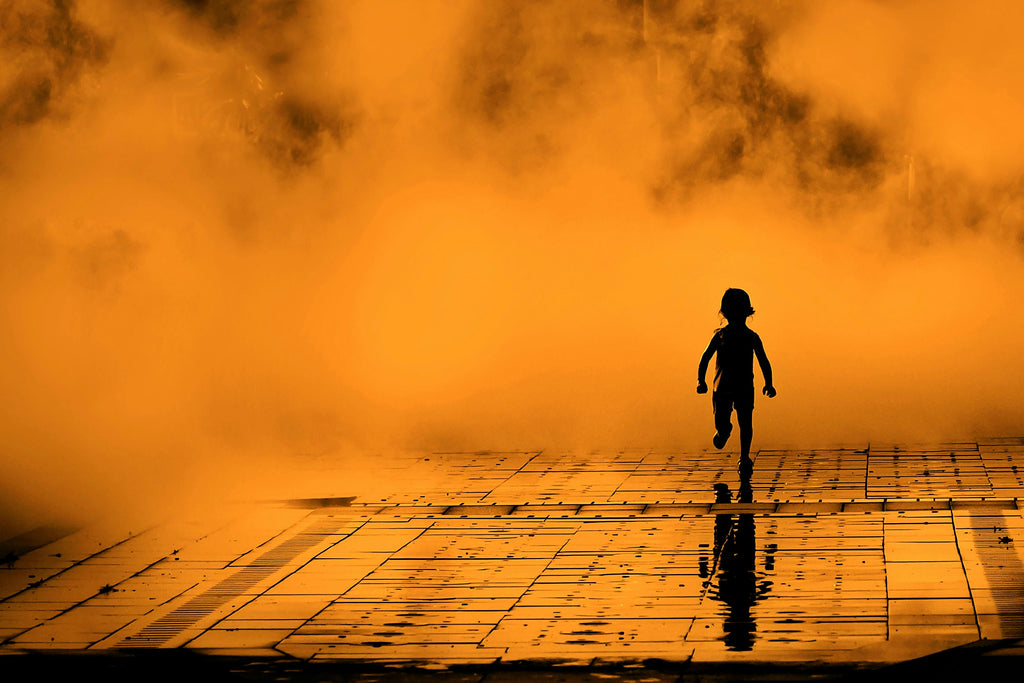As parents, ensuring the safety and security of our children is our top priority. One of the most crucial aspects of keeping our kids safe at home is teaching them about fire safety. Fires can happen unexpectedly and pose significant dangers to our loved ones.
By educating our children about fire safety measures, we empower them with the knowledge and skills to prevent accidents and respond effectively in case of an emergency. Teaching kids about fire safety goes beyond simply telling them not to play with matches. It involves instilling a sense of awareness, responsibility, and preparedness in them.
In this blog, we will explore practical tips and strategies to educate our children about fire safety, ensuring they understand the importance of prevention and know how to respond calmly and efficiently in a fire emergency.

Understanding the Risks
Fire hazards lurk in unexpected places within our homes, posing risks children may not recognise. Educating kids about these dangers is paramount to their safety. By familiarising them with common fire hazards, we empower them to take proactive measures to prevent accidents.
Unattended candles
Accidentally knocking over a candle or leaving it burning unattended can quickly lead to a fire. It's essential to teach children the importance of never leaving candles lit in a room unattended and always ensuring they are extinguished before leaving the area. Even a momentary distraction can result in a dangerous situation, emphasising the need for caution around open flames.
Overloaded electrical outlets
Plugging too many devices into a single outlet can cause overheating and potentially spark a fire. Children should understand the concept of electrical overload and be taught to use power strips and extension cords safely. Encourage them to seek assistance from adults if they notice any signs of overheating or electrical problems, such as sparking or unusual smells.
Flammable materials near heat sources
Items such as curtains, clothing, or paper placed too close to heaters or stoves can ignite easily. Educate children about maintaining a safe distance between combustible materials and heat sources. Remind them to be mindful of where they place belongings and to never drape or pile items near heaters or other appliances that generate heat.
Faulty wiring
If not properly maintained or replaced, old or damaged wiring in the walls can pose a serious fire risk. Teach children to recognise signs of electrical problems, such as flickering lights or outlets that feel warm to the touch. Encourage them to report any concerns to adults immediately so that a qualified electrician can address issues to prevent potential fire hazards.
Cooking accidents
Keeping cooking on the stove or remembering to turn off appliances can result in kitchen fires. Children should be taught basic kitchen safety practices, such as never leaving pots or pans unattended while cooking and always turning off appliances when finished. Emphasise the importance of using oven mitts and pot holders to handle hot items safely, and teach them how to respond calmly and effectively in the event of a grease fire by covering the pan with a lid and turning off the heat.

Practical Fire Safety Tips
Ensuring the safety of our children involves more than just awareness of fire hazards—it requires practical preparedness. We equip kids with valuable skills to handle emergencies confidently by teaching them specific fire safety measures. Here are essential tips to empower children to stay safe and respond effectively in case of a fire.
Creating a Fire Escape Plan
Developing a fire escape plan is essential for every household. Involve your children in the process by drawing a map of your home and identifying primary and secondary escape routes. Teach them how to crawl low under smoke, check doorknobs for heat before opening doors, and designate a meeting point outside the house. Practice fire drills regularly to ensure that everyone knows what to do in an emergency.
Demonstrating Proper Use of Fire Safety Equipment
Show your children how to use fire safety equipment correctly, such as smoke alarms and fire extinguishers. Teach them the importance of testing smoke alarms regularly and replacing batteries when needed. Additionally, demonstrate how to operate a fire extinguisher safely and encourage them to practice using it under supervision.
Practicing Safe Cooking Habits
The kitchen is a common area for fires to occur, making it essential to teach children safe cooking practices. Emphasise the importance of never leaving cooking unattended and keeping flammable items away from the stove, such as dish towels and oven mitts. Teach them how to use pot lids to smother small grease fires and to turn off the stove if a fire occurs.
Educating About Stop, Drop, and Roll
Children should know how to respond quickly and effectively if clothing catches fire. Teach them the "Stop, Drop, and Roll" technique: stop immediately, drop to the ground, cover their face with their hands, and roll back and forth to extinguish the flames. Reinforce this important safety measure through regular practice drills.

Understanding the Dangers of Playing with Fire
Educate children about the serious consequences of playing with fire. Emphasise that matches, lighters, and fireworks are not toys and should only be handled by adults. Discuss the potential dangers of fire and how it can quickly spread out of control, causing harm to themselves and others. Encourage open communication and address any curiosity about fire safely and constructively.
Promoting Responsible Behavior
Instilling responsible behaviour in children regarding fire safety is essential for preventing accidents. By teaching them the importance of making safe choices and following established rules, we empower them to act responsibly in any situation. Here are key strategies to promote responsible behaviour and ensure our children's safety at home.
Setting Clear Rules and Boundaries
Establish clear rules regarding fire safety and enforce them consistently. Teach your children never to play with matches, lighters, or any other fire-starting devices. Emphasise the importance of seeking adult assistance when they encounter a potential fire hazard and reinforce responsible behaviour through positive reinforcement.
Leading by Example
Children learn by observing their parents' behaviour, so it's crucial to lead by example when it comes to fire safety. Practice safe habits yourself, such as never leaving cooking unattended, keeping flammable objects away from heat sources, and always extinguishing candles before leaving a room. By demonstrating responsible behaviour, you instil the same values in your children.
Educating About Fire Safety Consequences
Help children understand the potential consequences of irresponsible behaviour regarding fire safety. Discuss real-life examples and stories that illustrate the dangers of playing with fire or disregarding safety rules. Encourage empathy by highlighting how fires can harm themselves and their family members, pets, and belongings.
Encouraging Open Communication
Create a safe and open environment where children feel comfortable discussing fire safety concerns or asking questions. Encourage them to voice any uncertainties or fears they may have about fire and provide honest and age-appropriate answers. Foster a sense of responsibility by involving them in discussions about fire safety plans and emergency procedures.
Practicing Fire Safety Drills Regularly
Regularly conduct fire drills with your children to reinforce safety procedures and ensure they know what to do in case of a fire emergency. Simulate different scenarios, such as escaping from different rooms or encountering blocked exits, to help them feel prepared for various situations. Use these drills as opportunities to identify any areas for improvement and adjust your fire safety plan accordingly.

Conclusion
Teaching kids about fire safety is not a one-time conversation but an ongoing process that requires patience, diligence, and repetition. Educating our children about fire hazards, equipping them with practical skills, and promoting responsible behaviour can empower them to stay safe and secure at home.
Remember, the goal is not to instil fear but knowledge and confidence, ensuring that our children are well-prepared to prevent accidents and respond effectively in a fire emergency.
Let's prioritise fire safety education and create a safer environment for our families. Please browse our products or contact us if you need assistance.
